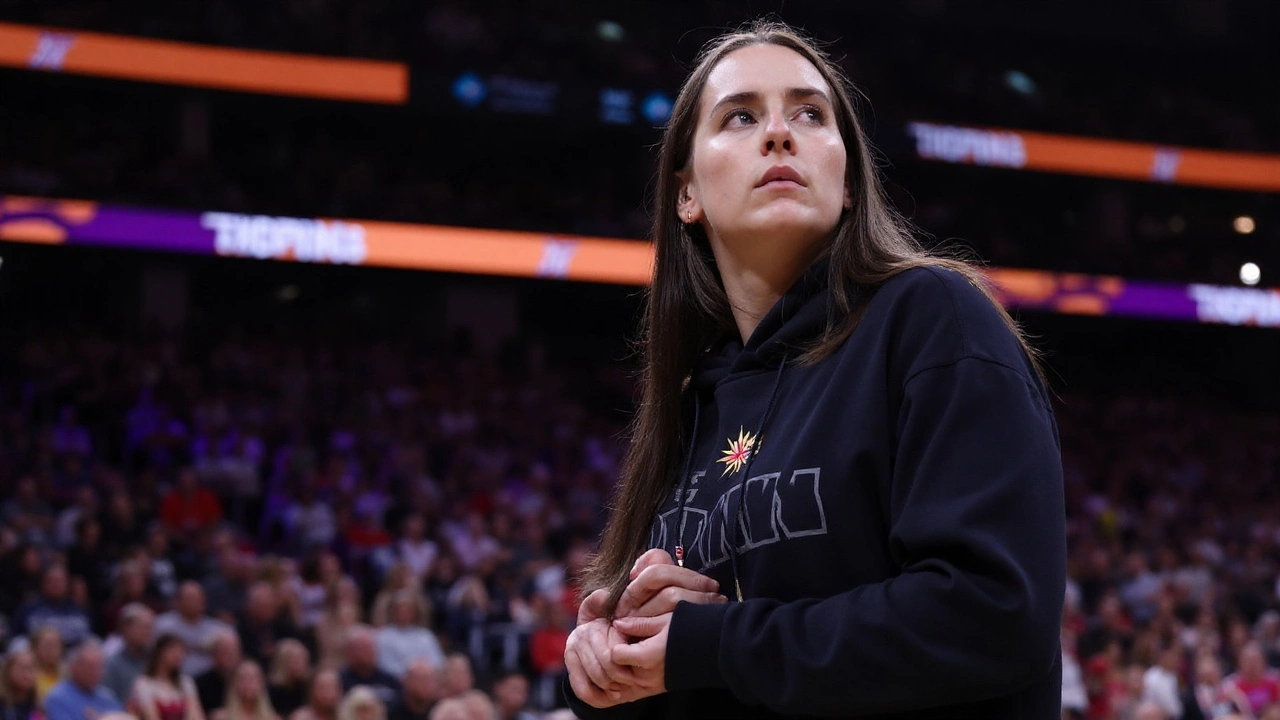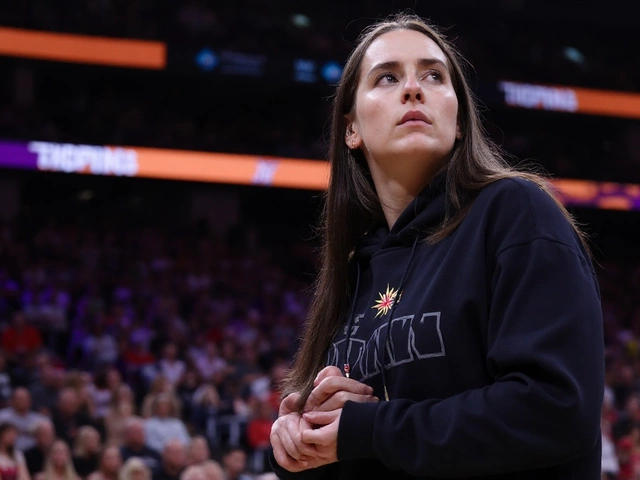Caitlin Clark ruled out for rest of 2025 WNBA season after injury setbacks

One of the WNBA’s biggest draws will not return this year. On Thursday evening, Caitlin Clark told fans she is shutting it down for the remainder of the 2025 season, ending weeks of wait-and-see updates and locking in a tough reality for the Indiana Fever and the league. In a post shared on social media, the 23-year-old guard said she had poured hours into rehab and on-court work but couldn’t get back to a place where playing would be safe.
Her message was raw. She said she hoped to share a better update, but the window closed. The decision follows a right groin injury suffered in the final minute of a win at Connecticut on July 15, a setback that sidelined her for nearly two months. During that recovery, she picked up a bone bruise in her left ankle in August, further delaying a return. Earlier in the year, she had already sat time with left quad and left groin issues, a string of lower-body problems that never gave her a clean runway.
This sophomore season ended at just 13 games. In those appearances, she averaged 16.5 points, 8.8 assists, and 5.0 rebounds, often dictating pace and putting teammates in easy scoring spots. For a No. 1 overall pick who became Rookie of the Year as a first-year pro in 2024, the contrast was stark: flashes of elite playmaking, then a long stretch of rehab and waiting.
Even so, Clark stressed that the season wasn’t lost for Indiana. She thanked fans for sticking with her and said the crowd energy gave her perspective. She called on the Fever to finish strong and push for a playoff spot, shifting the spotlight to the group that has had to rewire its offense without its most dynamic ballhandler.
Fever executive Amber Cox made the team’s stance clear: the organization wants Clark healthy for the long haul. She said Clark did everything possible to come back, but there isn’t enough time left in the season to get her safely on the floor. The team will keep supplying resources while targeting a full-strength return to start the 2026 season. That framing lines up with how most franchises handle multi-layered soft-tissue and ankle issues late in a campaign—protect the star, avoid a rushed timeline, and aim for a clean offseason ramp-up.
Injury timeline and why recovery dragged on
Groin injuries are tricky. They often involve adductor strains or related soft-tissue damage around the hip and pelvis. Players can feel fine in straight-line work but struggle with hard cuts, sudden stops, or change-of-direction bursts. The risk isn’t only pain—it’s re-injury. If you push too soon, setbacks happen. That’s likely what Indiana weighed as Clark’s return window narrowed.
The left ankle bone bruise added complexity. Bone bruises can be stubborn: swelling, stiffness, and pain flare with load, especially when adding live drills and contact. Medical staff typically layer rehab—mobility, strength, stability, then progressive on-court work. If any box doesn’t get checked, timelines slip. Combined with earlier quad and groin issues on the opposite side, the staff had multiple variables to manage, including balance and compensation patterns.
The call to shut down a season is never just about one game or one week. It’s about the next 12 months. With only a short stretch left in the regular season and the intensity of a playoff chase, rushing back from a groin plus an ankle bruise would invite risk. Indiana, like many teams in similar situations, chose durability over a quick fix.
- July 15: Right groin injury in the final minute at Connecticut; Fever win but lose their lead guard.
- Late July–August: Rehab continues; left ankle bone bruise surfaces during recovery, slowing progress.
- Thursday: Clark announces she will not return in 2025; Fever confirm long-term plan centers on a 2026 start.
- Remainder of 2025: Out for the season; focus shifts to strength, stability, and controlled on-court progression.
What does the rehab likely look like from here? Expect continued core and hip strengthening to protect the groin, ankle stability work to handle cuts and landings, and careful load management. That process usually ramps up from individual drills to controlled scrimmages, then live play. By locking in a 2026 target, the Fever bought time to do each step right.

How the Fever adjust — and what it means for the WNBA
Indiana’s identity has leaned on pace, spacing, and pick-and-roll creation. Clark’s 8.8 assists per game helped unlock shooters and bigs, and her pull-up threat bent defenses. Without her, the Fever have to keep it simple and lean into strengths they can control every night.
Expect more inside-out touches and a steadier diet of high-percentage looks. Guards will need to share ballhandling and keep the tempo balanced—fast enough to find easy points, cautious enough to avoid live-ball turnovers. The staff can manufacture assists through set actions: staggered screens to free shooters, dribble handoffs to create downhill lanes, and post touches that force help and kick-outs. It’s the same playbook, just run by committee.
There’s also the mental game. When a franchise player goes out for the season, roles change. Shot profiles shift. Second-unit minutes grow. The Fever’s margin for error gets thinner, but clarity helps—everyone knows who’s doing what. The message is usually straightforward: value the ball, win the glass, and squeeze stops in crunch time.
For the WNBA, Clark’s absence lands beyond box scores. Her rookie year lit up arenas and screens, and that momentum carried into a second season that was supposed to be her first full run. Television windows were built around the Fever, ticket demand followed her on the road, and sponsors tapped into the buzz created by her record-breaking college run at Iowa. Some of that energy will dip in the short term. The league will counter with a deep field of stars and a playoff race that tends to deliver tight finishes, but there’s no getting around it: when a headlining guard sits, the ripple is real.
Still, this story isn’t ending—it’s pausing. The organization says it expects Clark back at full speed to open 2026. That gives the Fever an offseason to tune the roster and an entire training camp to rebuild chemistry with a healthy lead guard. For Clark, it’s a runway to return without the day-to-day pressure of a ticking clock.
What should fans watch for now? First, how the Fever close games. Clark’s creation often decided late possessions; the team now has to manufacture quality looks through movement and screening. Second, defensive consistency. Winning ugly becomes a feature, not a bug, when offense is by committee. And third, development reps. Injuries often force growth in places that don’t get the spotlight—weak-side rotations, offensive rebounding, and end-of-clock discipline.
Clark’s note to fans carried more than disappointment. It had resolve. She said the support brought joy and perspective, and she pushed the group to finish the job. That tone matters in a locker room—hope without false promises, urgency without shortcuts. Indiana now tries to turn that into wins in the final stretch, while its most visible star turns the page to a full, patient recovery.
